We had an unexpected invitation to spend last weekend in the southern Drakensberg mountains, to which we spontaneously said ‘yes’. Morning walks were a delight and I share here some of the treasures, mostly flowers, that we enjoyed seeing in the grasslands.
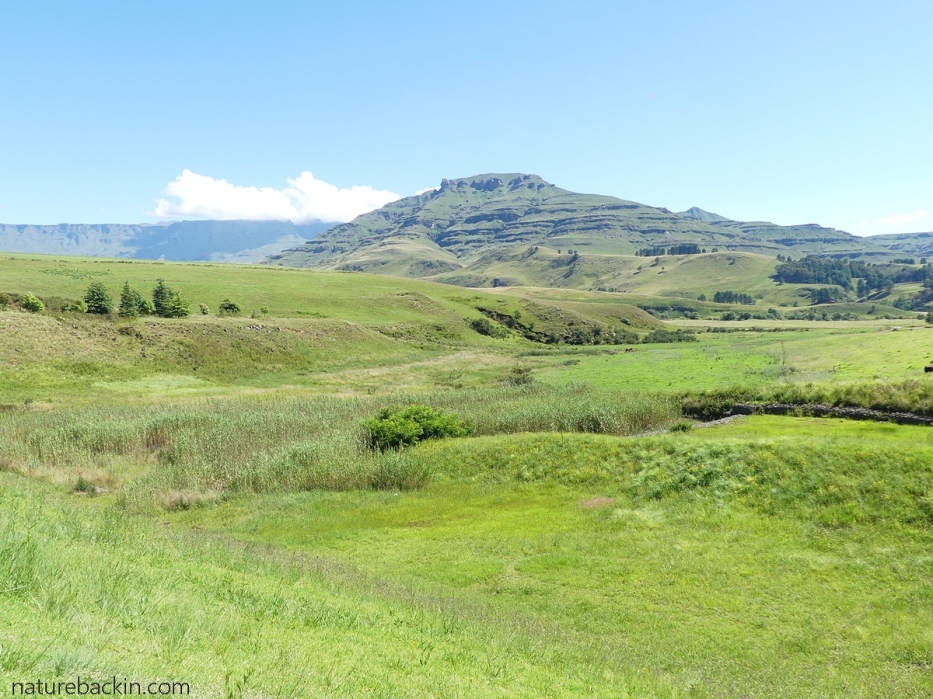
After abnormally prolonged and heavy rains the grasslands in the foothills of the Drakensberg mountains are unusually green even by summertime standards. The trees visible in the photo above are exotic imports – few indigenous trees occur in the montane grasslands although small natural forest patches do occur in sheltered ravines and gullies usually along the banks of streams.
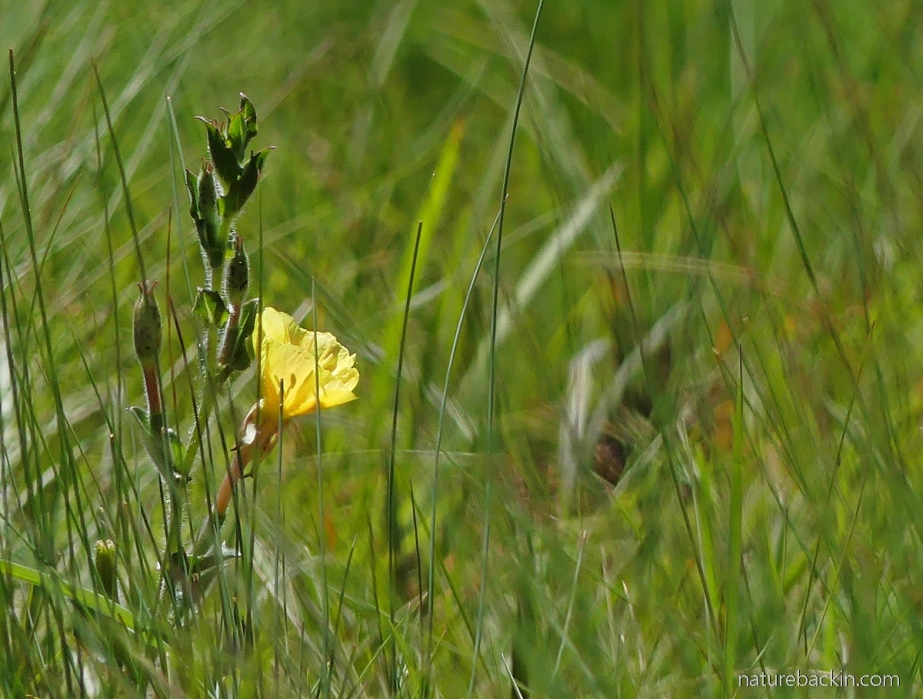
Nestled in the grasses is the most incredible array of wildflowers – the more one looks the more one sees. Identifying mountain flowers is not my forte but I have given it a go although mostly I have got stuck at the genus level – assuming I got even that right!
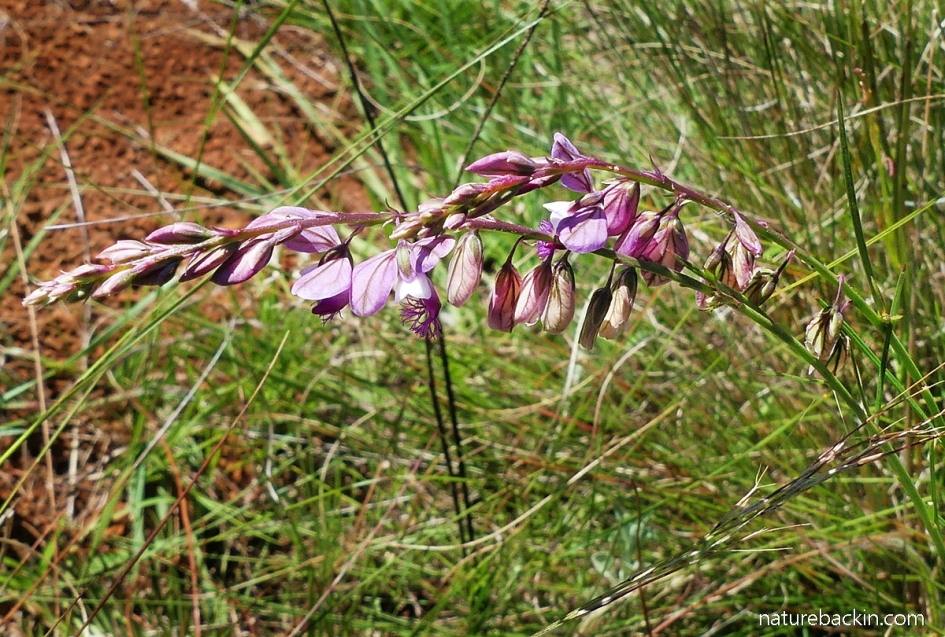
I was delighted to see the small sprays of flowers of a relatively tiny Polygala species, though they were difficult to photograph waving in the the breeze in bright sunlight. The photo doesn’t convey the small size or delicateness of the flowers. I think that it is Polygala hottentotta.
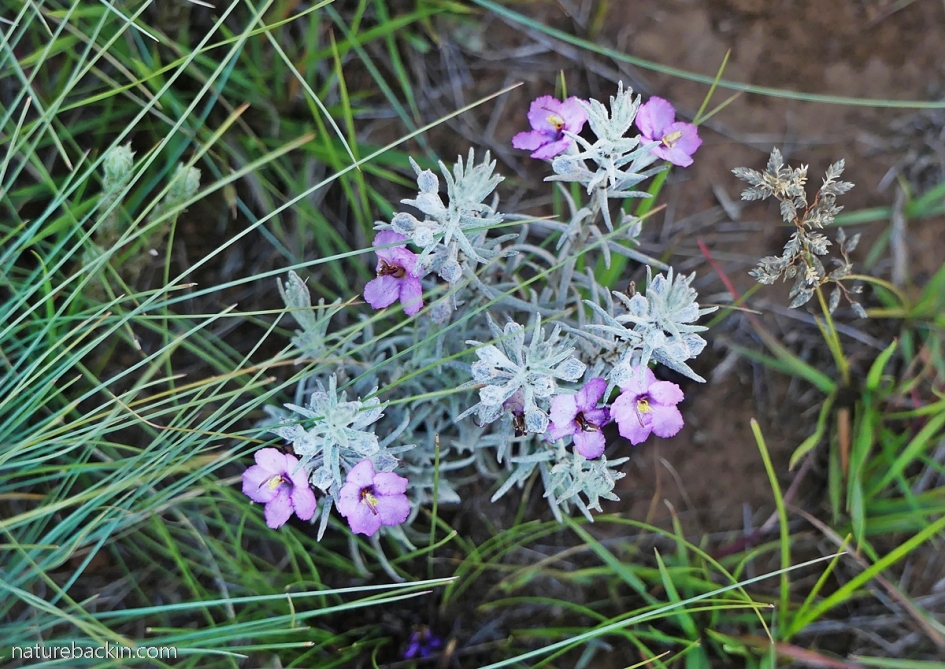
I don’t recall having noticed this lovely little plant before, with the silver leaves setting off the mauve flowers so wonderfully. I think this is a silvery sopubia (Sopubia cana).
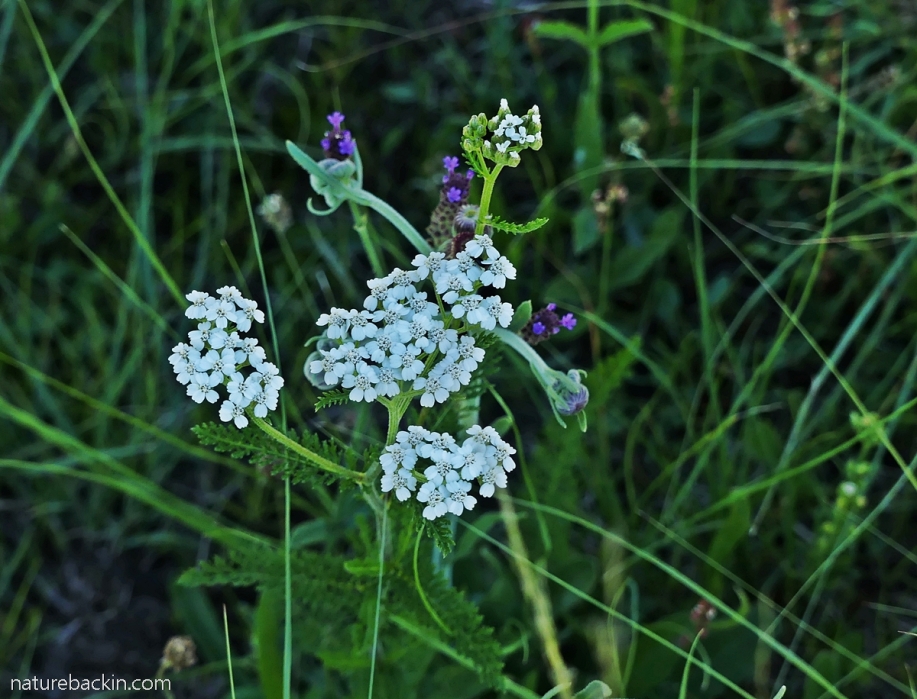
This pretty white flowering herby plant is tantalising familiar, but I am darned if I can remember what it is nor have I managed to find it in my wild flowers field guide although it must be there!
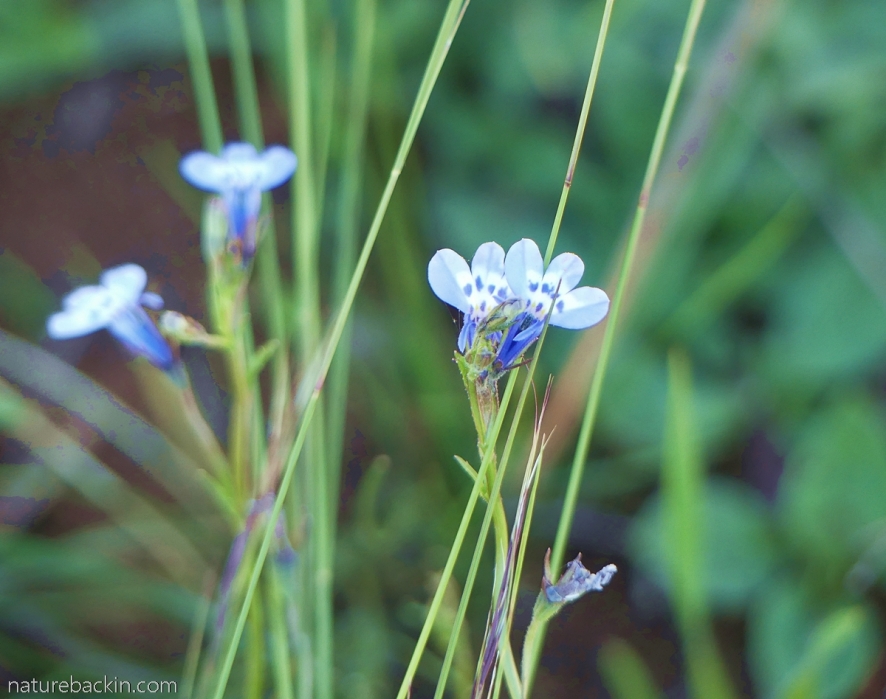
There were patches where these lovely little wild lobelia brightened up the grasses as they nodded and waved in the breeze. Another challenge to photograph but they are so pretty I included this pic nevertheless. I think this is Lobelia flaccida.
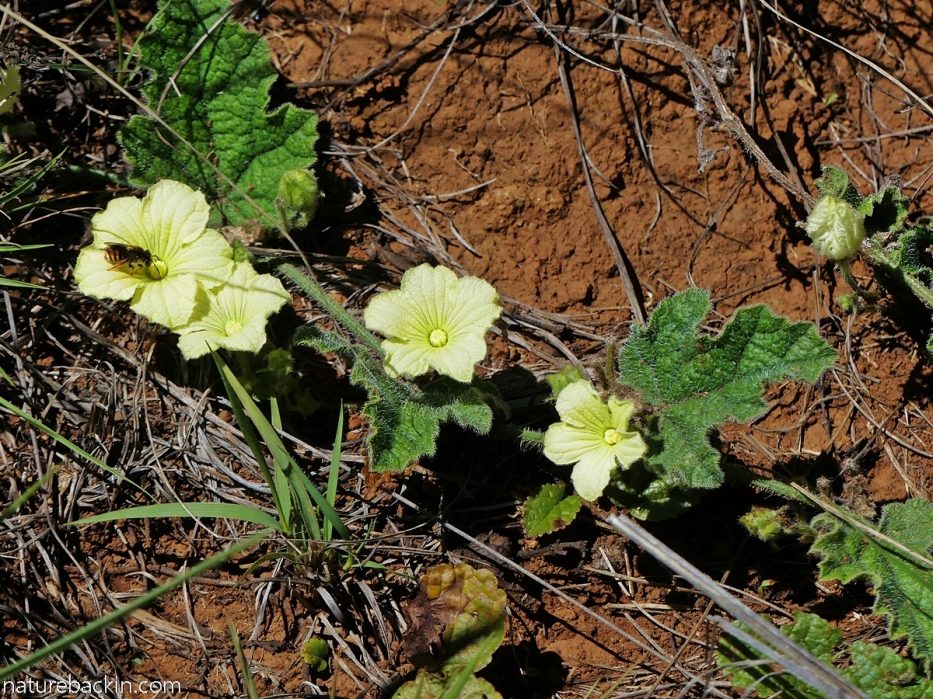
A bee was visiting the flowers of a small ground creeper that is one of several species known as wild cucumber. The question that I cannot settle though, is it a species of Cucumia or Coccinia? A forager would need to know for sure as the fruits of some species are poisonous, and for others the leaves may be cooked and eaten as a spinach.
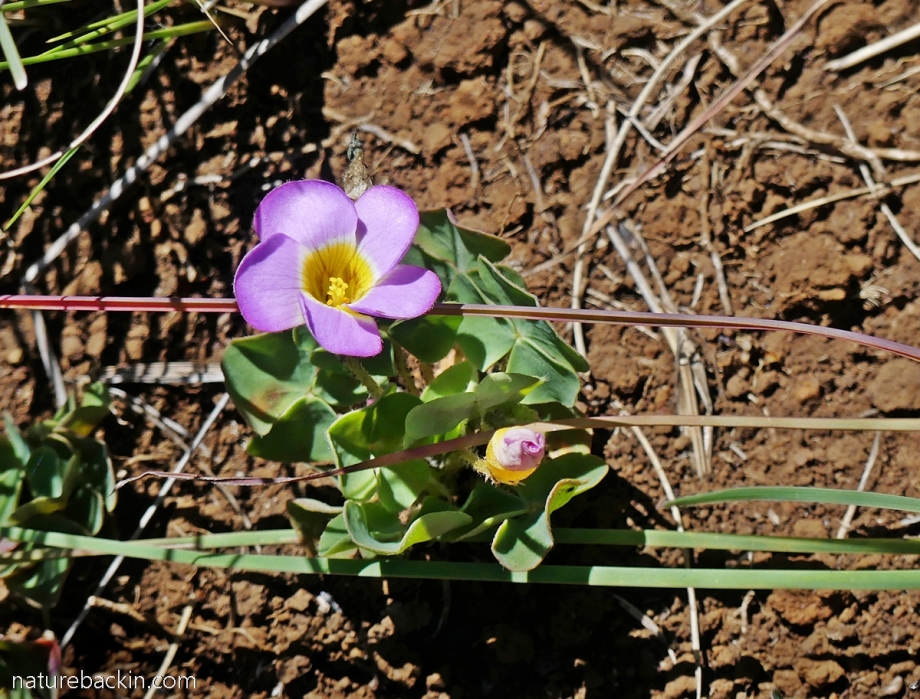
Belonging to the sorrel family, this is likely an Oxalis – possibly Oxalis semiloba?
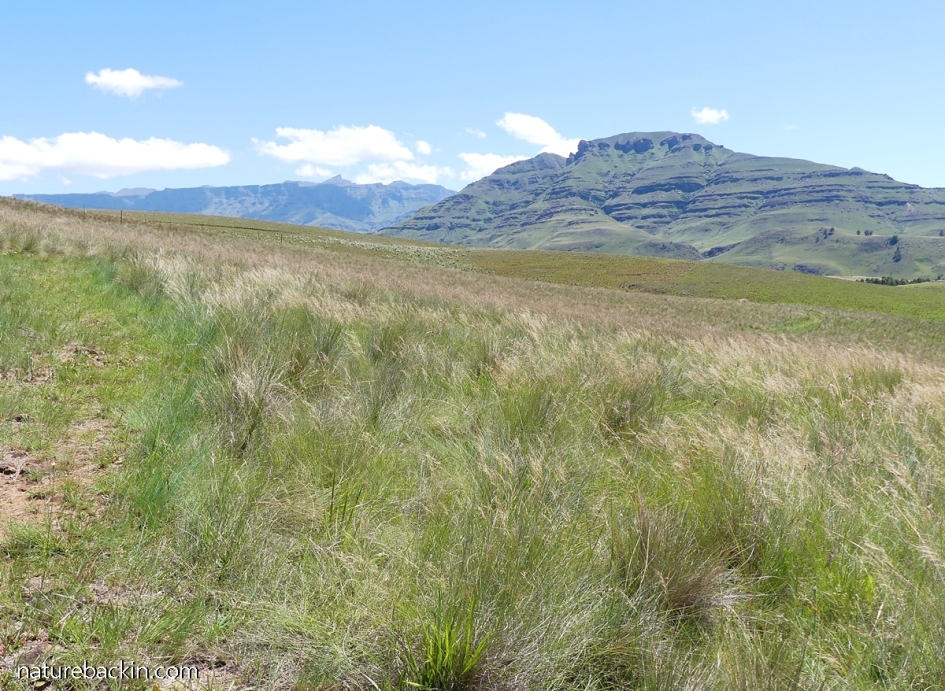
As the summer progresses the grasses are starting to go to seed. This is a fenced piece of grassland where horses sometimes graze.
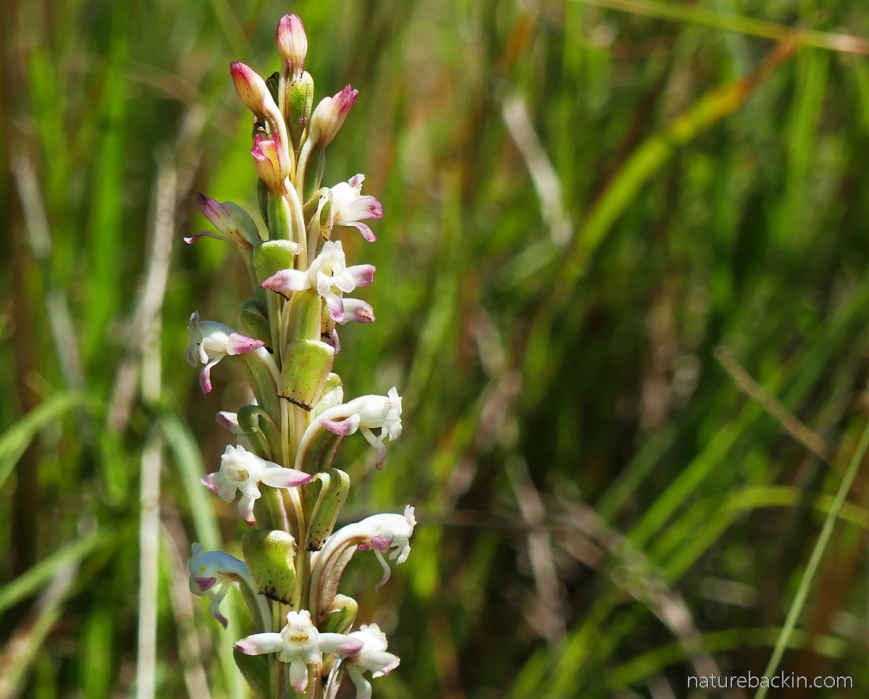
I was very happy to see this ground orchid, which is known as blushing bride (Satyrium longicauda). Its tuberous root is edible. Although there are indigenous epiphytic orchids in South Africa, most of our orchids are ground orchids, most notably Satyrium with 40 species occurring in the country, and Disa with 70 species occurring.

When we were walking near a stream this river frog (probably Afrana angolensis) crossed our path. Due it its very long hind legs relative to its body size it can hop surprisingly fast and far. It has beautiful eyes reminiscent of tiger’s-eye semiprecious stones.
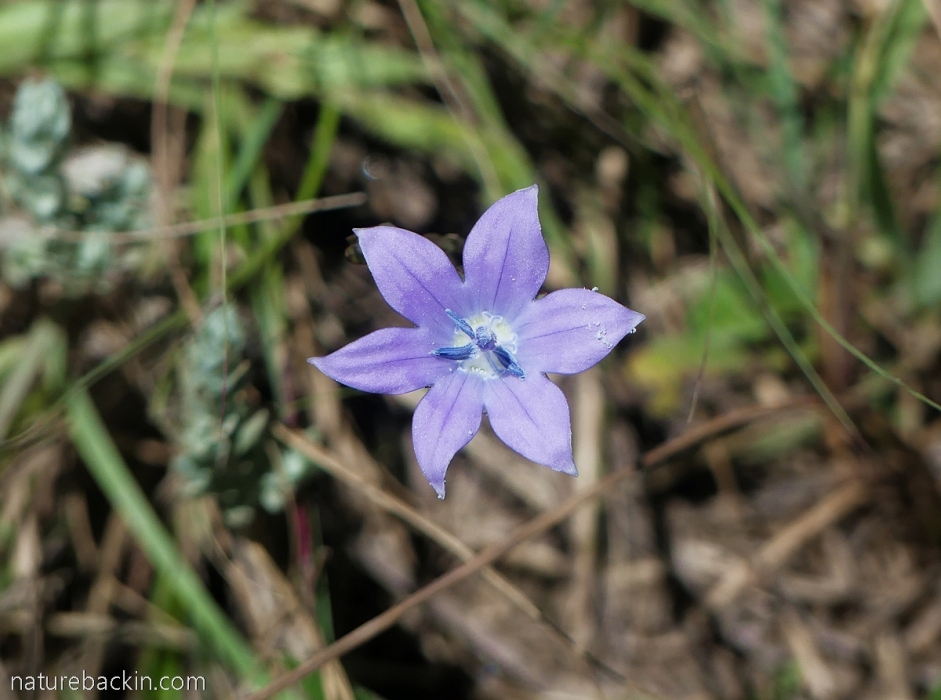
One of the Wahlenbergia species, this flower is a lovely blue-mauve colour. Usually each plant has several flowers but as they were bowing and rocking in the breeze most of my group photos had at least one blurry flower, so I settled for this photo of a single bloom.
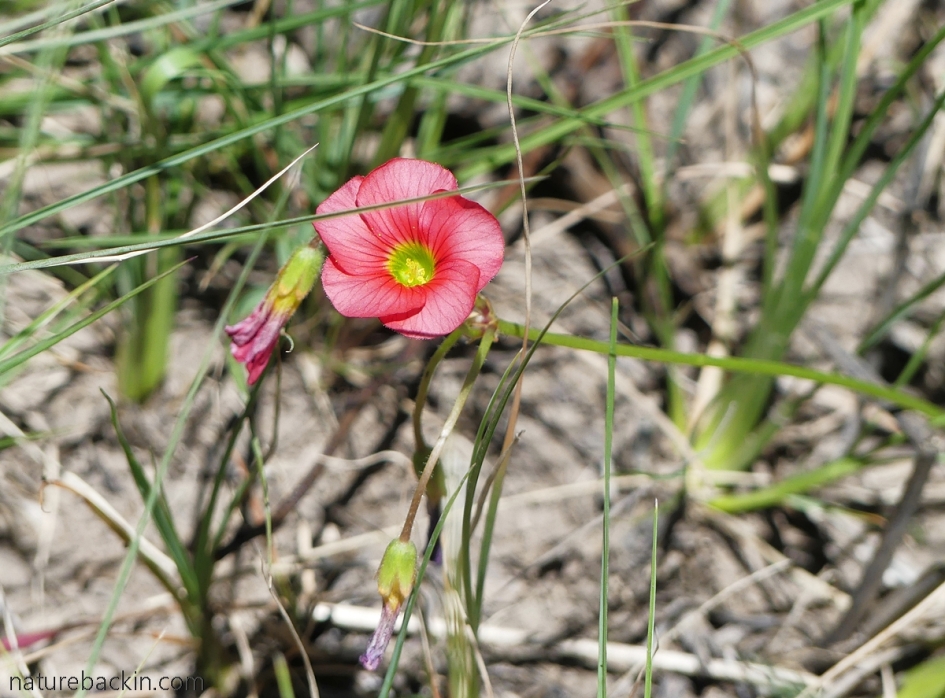
Another Oxalis in the morning sunshine – this one is a lovely rosy colour. The soil near the stream was pale and clay-like. Run-off turned the water in the nearby stream slightly milky.

Also on the path near the stream this dragonfly was using the seedhead of a grass stem as a vantage point.
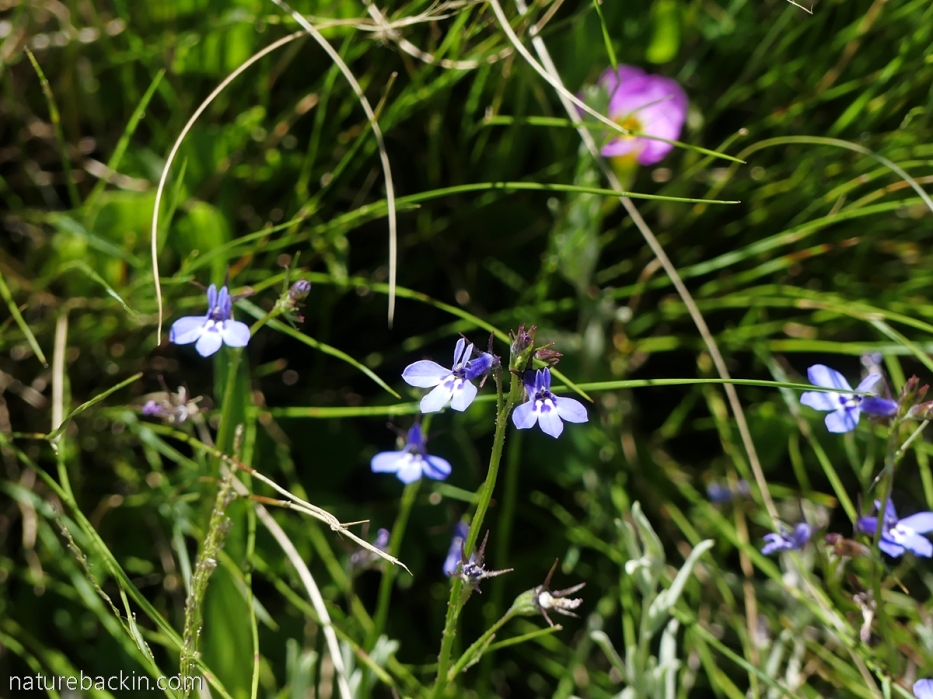
More wild lobelia with an oxalis flower lurking in the background.
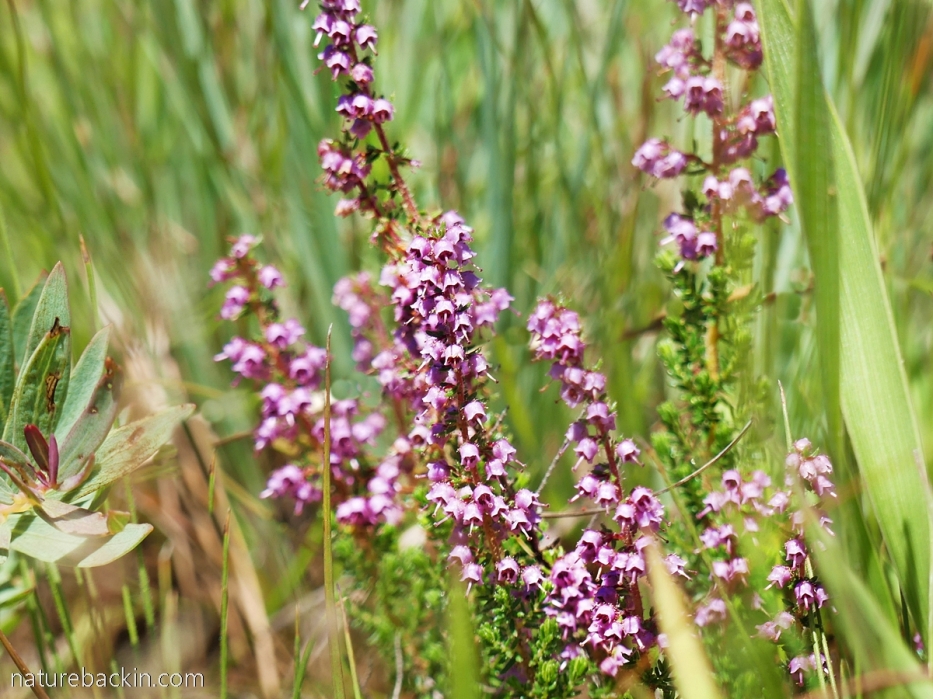
I was very smitten by this small low-growing Erica with its flowers like minute bells. There are over 620 species of ericas in South Africa with most species occurring in the Western Cape fynbos regions.
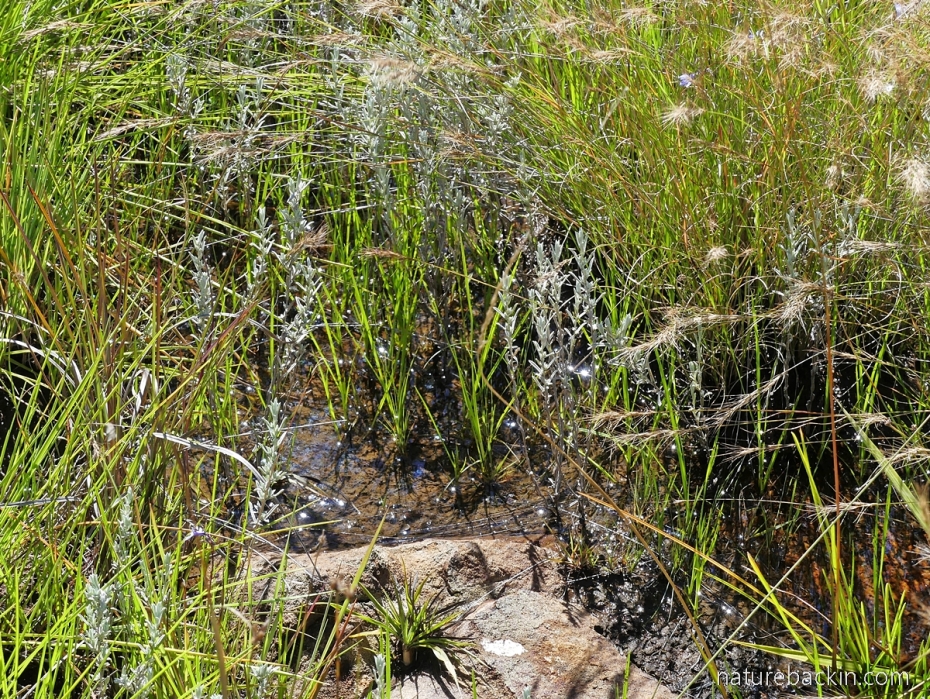
Because of all the recent rains there was standing water in sections of the grassland making some sections of the pathway a little boggy, but this water was standing alongside the path so no muddy boots for us.
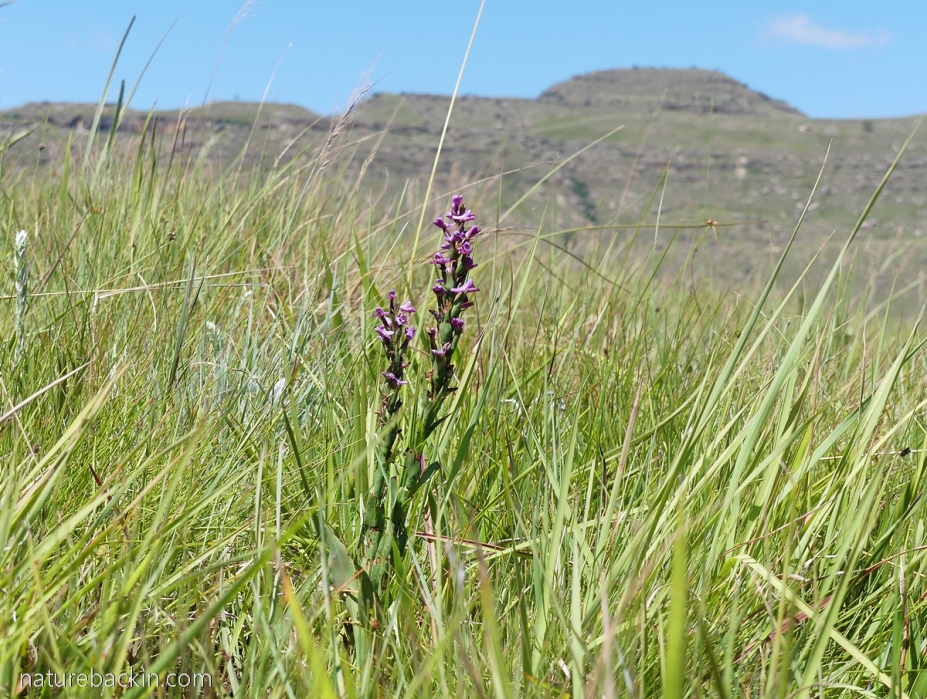
On seeing this plant I thought it must be one of the terrestrial orchids. It is likely one of the disas and is perhaps Disa stachyoides, but the photo is not really clear enough to be sure.
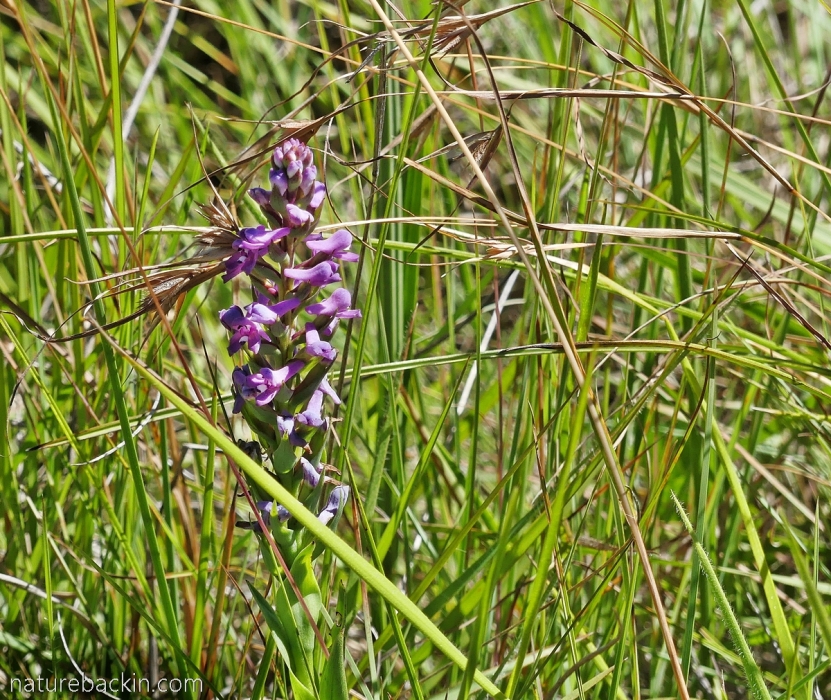
Here is a closer look, though the harshness of the sunlight makes it a bit too contrasty to get a clear photo.
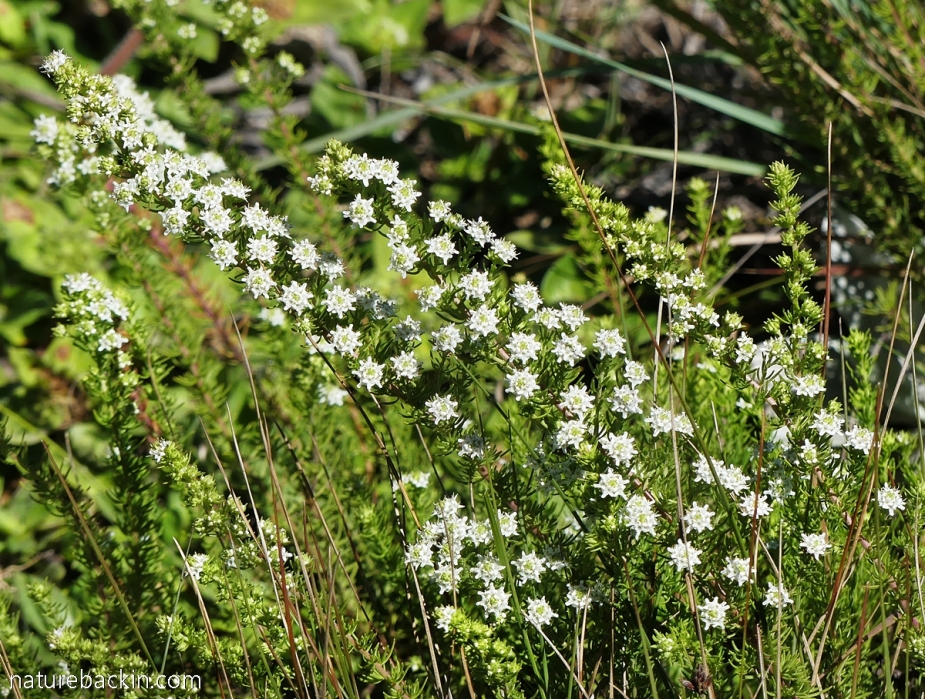
Another white flowered plant that I have been unable to identify. If anyone knows what it is please do let me know!
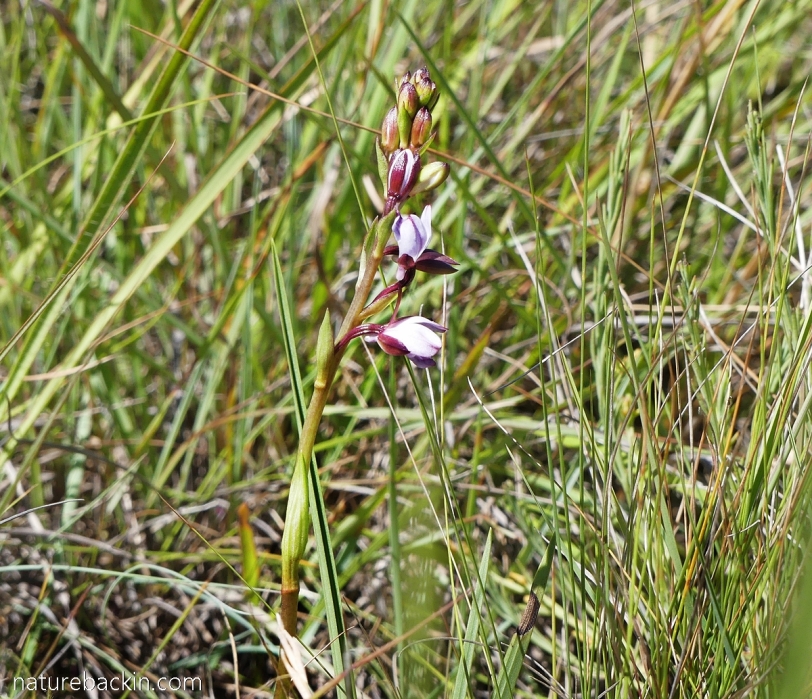
This plant had a slightly mysterious quality. The flowers were not yet fully open. There is a chance that it is Eulophia zeyheriana. There are 42 species of Eulophia, another genus of mostly terrestrial orchids, occurring naturally in South Africa.
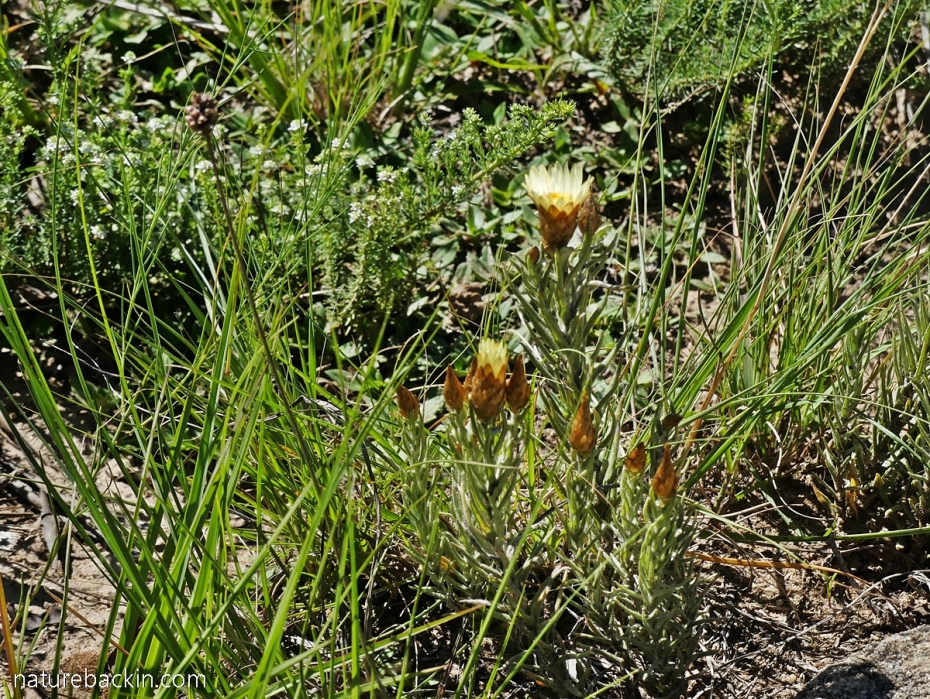
There are over 244 Helichrysum species occurring in South Africa, including the one pictured above, which I guess is the monkey-tail everlasting (Helichrysum herbaceum).
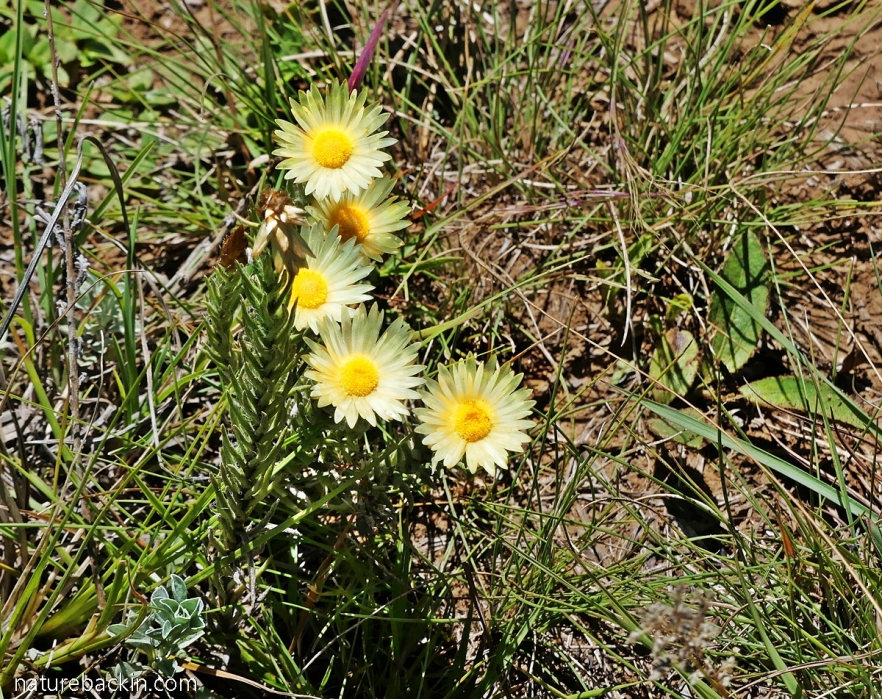
Above is another cluster of Helicrysum flowers taken from above where the flowers are more open.
Any comments or corrections on the identification of the flowers that I photographed would be very welcome.
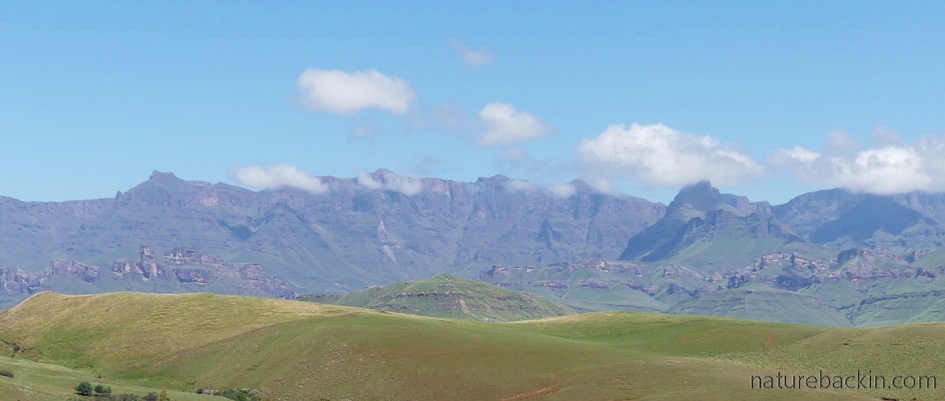
I have decided to post fortnightly instead of weekly on naturebackin. I need to spend less time at a computer or phone screen. After all, it is hard to let nature back in when not actually outdoors! So my next post will be around the second Thursday in February. I hope to see you then!
Source:
Pooley, Elsa. 1998. A Field Guide to Wild Flowers of KwaZulu-Natal and the Eastern Region. Durban: Natal Flora Publications Trust.
Also I have learnt a lot about wild flowers from Christeen Grant’s blog Life Wonderings of a Nature Lover
Posted by Carol

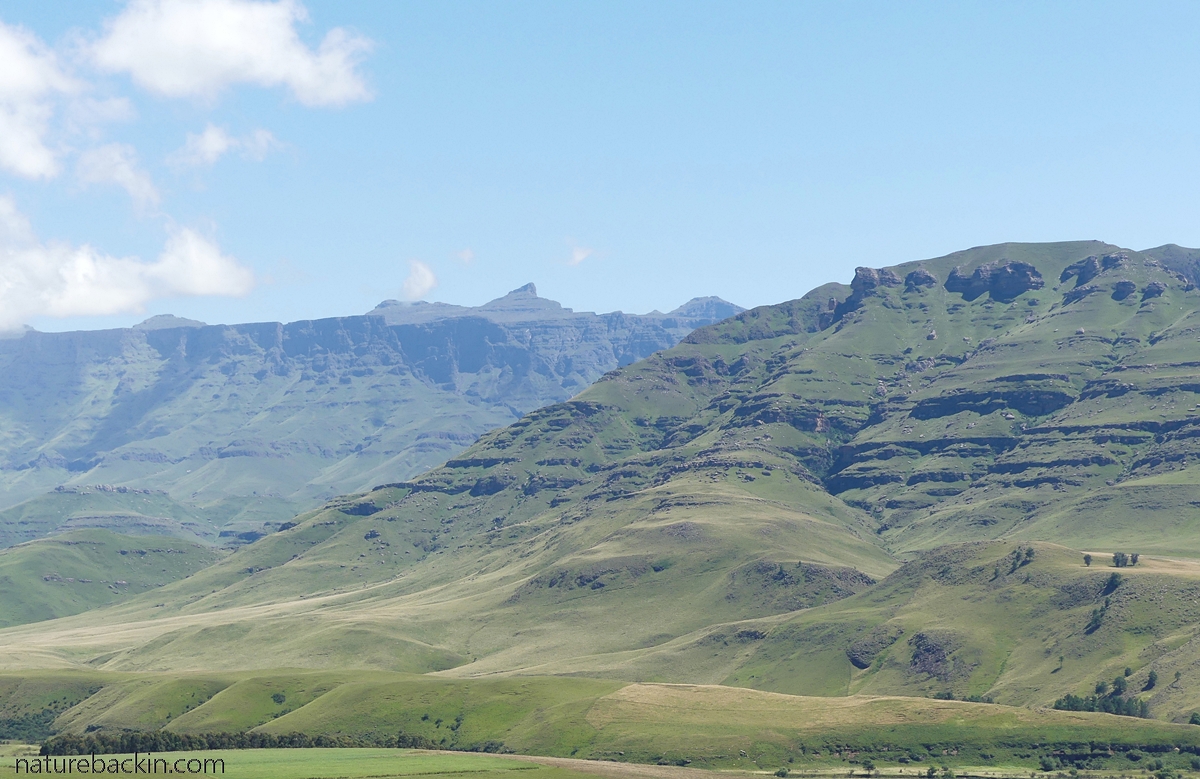


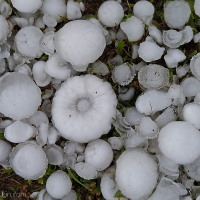

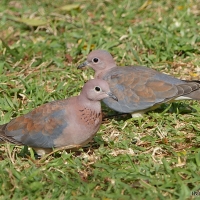
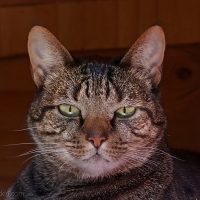
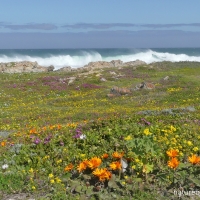
January 31, 2022 at 10:01 pm
What a wonderful walk through the mountains! It always surprises me to know that such a wide variety of flowers are there, when the long distance pictures look like not a lot could be growing there.
I enjoyed the pictures and information about orchids. The wide variety seems so exotic to me, as most of the dozen or so orchid types around here are listed as uncommon-to-rare. Many of the orchids that do grow in Massachusetts are “bog orchids” and grow in and around wetlands.
Would you say that South Africa has the largest variety of orchids in the world?
Be well,
Julie
LikeLiked by 1 person
February 8, 2022 at 5:05 pm
Yes it is surprising when one takes a closer look at grasslands and start to see the amazing diversity.
South Africa has about 500 species of wild orchids – way down the list I gather. Ecuador and Columbia top the list with over 4000 species each!
LikeLike
February 10, 2022 at 11:35 pm
Wowie 4000 species in South America! I had no idea!
LikeLiked by 1 person
January 31, 2022 at 8:50 am
Dear Carol, What a treat and beautiful photos of the mountain treasures you found! When I have some time I’ll go through and try and help with identifications. Thank you so much for your kind reference to my blog. xxx
LikeLiked by 1 person
February 8, 2022 at 4:39 pm
Hi Christeen
Thank you – that would be lovely if you have the time.
Best from Carol
xxx
LikeLiked by 1 person
January 30, 2022 at 4:35 pm
Thank you for this delicate bouquet
LikeLiked by 1 person
February 8, 2022 at 4:33 pm
Thanks Mariss 💐
LikeLike
January 29, 2022 at 8:23 am
I used to know a Ranger in the Giants CASTLE AREA… He used to carry with him when photographing plants, two pieces of clear plastic hinged together, to screen plants from wind when photographing them.
LikeLiked by 1 person
January 29, 2022 at 8:30 pm
Thanks John – that is a clever plan. There always seems to be something of a breeze even on a relatively calm day in the Berg.
LikeLike
January 29, 2022 at 8:11 am
What a delightful exploration with you. And yes, getting out there definitely beats computer screens!
LikeLiked by 1 person
January 29, 2022 at 8:29 pm
Thanks Margaret. Yes, I hope to be getting out there a bit more.
LikeLiked by 1 person
January 29, 2022 at 5:34 am
I know what you mean about spending too much time at the computer. Enjoy your extra time in the outdoors! The wild flowers are lovely, especially those hidden gems mixed in amongst the grasses.
LikeLiked by 1 person
January 29, 2022 at 8:29 pm
Thanks Graham. I feel I need a bit of recharging outdoors, It is lovely to discover tiny and even the not-so-tiny flowers that are partially concealed among the grasses. The diversity is remarkable.
LikeLiked by 1 person
January 29, 2022 at 3:20 am
Very nice to go hiking in the Drakensberg again along with you, Carol.
Last time we were there we had to cut our visit short and flee for home due to the newly announced “hard lockdown” so I missed out on so many of the hikes I planned to do around Royal Natal.
These lovely photographs of yours have reminded me that we need to go back!
In which part of the “Berg did you visit?
LikeLiked by 1 person
January 29, 2022 at 8:28 pm
I do hope that you get to return to Royal Natal before too long. We have spent many hours walking there at weekends when we lived in Ladysmith quite a few years ago.
The area we visited is near Underberg. It is not a conservation area but a resort named Castleburn. I confess that I censored out the artificial lake and the generous plantings of exotic trees from my photos …
LikeLiked by 1 person
January 30, 2022 at 4:16 am
The closest we’ve come to Underberg is where the Kamberg road turns off the Lower Lotheni Rd leading from Nottingham – a beautiful drive that – and I think you’ve planted a seed that we need to start exploring further west into the Drakensberg than we’ve done before.
LikeLiked by 1 person
February 8, 2022 at 4:32 pm
It is definitely worth considering!
LikeLiked by 1 person
January 29, 2022 at 2:49 am
Happy to see you had a chance to explore some unfamiliar territory. And for us to see such lovely flowers that are mostly unfamiliar to us on the other side of the globe. My favorite of the flowers was the (1st) orchid. But I adore wild flowers in particular.
I understand and sympathize about the less frequent posting. On the other hand, perhaps it’ll give me a chance to catch up on your posts! 😉 Get out there and ENJOY putting nature back in! 🤗
LikeLiked by 1 person
January 29, 2022 at 8:25 pm
I really enjoyed learning a bit more about some of the grassland flowers. The ground orchids are particularly lovely.
Thanks for the good wishes. Hopefully I can feel a bit more recharged after spending more time away from the computer screen!
LikeLike
January 29, 2022 at 12:35 am
Lovely! A wildflower meadow is a always a treat.
LikeLiked by 1 person
January 29, 2022 at 8:23 pm
Yes they are. One of the joys of spring and summer!
LikeLiked by 1 person
January 28, 2022 at 10:33 pm
What beautiful vistas and so much green! The land must be rejoicing over all the rain. The weather looks superb and the flowers are lovely. The only one I recognize is the white Yarrow (Achillea millefolium), a medical herb likely introduced by colonists as it was here. The first yellow one looks like a primrose (Oenothera sp.)
Enjoy your time in nature, my favorite place to be!
LikeLiked by 1 person
January 29, 2022 at 8:21 pm
The eastern parts of our province have had a great deal of rain (unlike other parts of the country) and unfortunately some areas have suffered rather disastrous flooding with loss of life and property. More severe storms are forecast over parts of the country this weekend.
Thanks so much for the IDs – both are introduced species. Achillea millefolium was introduced here too from Europe and my field guide said it can be found in disturbed ground. The area were we walked is not in a conservation area and the land is used for grazing domestic stock and so is somewhat disturbed.
All Oenothera sp. in South Africa, also are introduced species.
Thanks for the good wishes – I hope to be outdoors more often. I expect you will need to wait for milder weather, although your winter walks must be wonderful even if necessarily brief!
LikeLiked by 1 person
January 28, 2022 at 8:49 pm
Lovely to see these photos. Some of my favorite flowers are native to South Africa, and it’s interesting to see them in their wild form. The first white flower reminds me very much of achillea (not sure if that grows in South Africa or not).
LikeLiked by 1 person
January 29, 2022 at 8:07 pm
I am pleased to hear that you enjoyed seeing some of the wild flowers. Yes it is an achillea (I now realize thanks to Eliza’s comment). My field guide says that it (Achillea millefolium) was introduced from Europe and now it can be found growing wild in disturbed places. These photos were taken in the vicinity of a holiday resort (not in a conservation area) and the grasslands are disturbed by grazing domestic stock.
LikeLike
January 28, 2022 at 7:52 pm
How glorious to see the Drakensberg again. When my husband and I visited there every weekend for a year while he was compiling his field guide to the ‘Berg I knew so many of the flowers … how rusty i have become. Yet, I have enjoyed looking at them all!
LikeLiked by 1 person
January 29, 2022 at 8:01 pm
Glad our visit brought back memories. It must have been a wonderful time when you and your husband were visiting the mountains weekly, although quite an undertaking to compile a field guide to the Berg. Is the book still in print and available?
LikeLike
January 30, 2022 at 3:55 am
It has been out of print for a while now.
LikeLiked by 1 person
February 8, 2022 at 4:31 pm
Oh that is a shame.
LikeLike
January 28, 2022 at 7:49 pm
Oh you are lucky! The Berg is a magical place indeed! I regret not spending more time there. You have a great selection of photos, and one of my favourite wild flowers is Wahlenbergia (sp?). Some of the flowers you captured are familiar to me, but there are many I am not familiar with. All are beautiful! Your final view of the Berg is stunning! I will miss your weekly blogs, and will look forward to the fortnightly ones even more! Thanks for the link to the other blog. I had a peep and there are lovely photos there.
LikeLiked by 1 person
January 29, 2022 at 7:59 pm
Yes it was an unexpected treat. We must plan to go to the Berg more often – after all its not that far!
I may go back to blogging weekly but am feeling a bit kind of burnt out so it seems best to see how it goes fortnightly and perhaps with more inspiration from being more outdoors! Thanks for your kind words.
LikeLiked by 1 person
January 29, 2022 at 10:29 pm
In all the years I lived in PMB, I only went to the Berg a couple of times. It was right on our doorstep! There is so much beauty there, with the majestic mountains, wildlife and vegetation! I still treasure a book I have on the Berg written many moons ago by a friend whom I have unfortunately lost touch with (who now lives in the UK).
I know how you feel, and you will probably find that the fortnightly blogging will be less pressured for you, especially when you do the research for the blog! Even your photo only blogs are amazing!
LikeLiked by 1 person
February 8, 2022 at 4:31 pm
The Berg remains a very special place. We will definitely follow through on another visit before too long!
Blogging can become hard to prioritize sometimes, even though it is so rewarding when having the time to keep in touch!
Apologies for the delay in replying. We had to make a short trip to the Eastern Cape. It was lovely to see parts of the Free State and the north-eastern part of the Eastern Cape so green after recent much needed rains.
With best wishes from KZN.
LikeLiked by 1 person
February 8, 2022 at 9:22 pm
Your trip must have been lovely, and I can just visualise the scenery! It is great to hear that those areas have had rain. Best wishes to you too, Carol.
LikeLiked by 1 person
January 28, 2022 at 7:36 pm
Beautiful post, love all the beautiful flowers you managed to see.
I think that’s a great idea to get outside more. I think I will follow suit. 😊🐝🐞🕷🦋🌱🌾🌸🌺
LikeLiked by 1 person
January 29, 2022 at 7:55 pm
Thanks Debs – I hope that you manage it too!
LikeLike